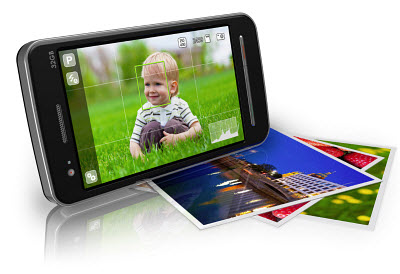The ubiquity of smartphones with cameras nowadays is already making it easier for everyone to try to become photographers.
The advancement in the technologies used in cameras for smartphones and other mobile devices already allows everyone to take photos with great quality, sharpness, vividness, color reproduction, and dynamic range. Some are even capable low light shooters.
However, smartphone cameras are still not as capable as dedicated digital cameras. There are things you need to do to make use of their full potential. While smartphone cameras now are indeed already significantly better, you can’t expect them to match DSLRs or even decent point and shoots. It will be helpful to follow the smartphone photography tips below to achieve better results.
1. Be familiar or properly acquainted with the camera application of your smartphone.
Not every camera app is the same. You need to familiarize them to know what settings work best and how you can take the best photos using them. It’s not enough that you know how to press the shutter button, switch between photo and video modes, and view the photos you took in your gallery. You have to understand how the features work and learn the quirks of your smartphone’s camera hardware and software. 
Smartphone camera applications usually include “scenes” or “modes” that can help you take better snaps. If you are shooting a landscape with a great contrast difference between the two sides, you can benefit from using the HDR mode. If you are shooting kids playing or some event where a lot of motion takes space, using the sports mode will be advisable. On the other hand, if you are trying to get macro shots of flowers under bright sunlight, you may want to adjust the exposure settings to avoid blown out highlights.
2. Clean your lens.
This is a very basic step but not many are even bothered to do it. Dirty camera lenses lead to blurry and less clear photos. You can’t snap vivid and sharp photos with dirty lenses. Be careful in cleaning the camera lens, though. You might scratch the lenses and cause a permanent defect on your smartphone’s camera.
Avoid damaging your smartphone camera lens it by using a soft fabric to wipe it. In most cases, you don’t have to use any special cleaning agent. Simply wiping the lens with something clean and soft like a cotton cloth usually works.
3. Know how to compose your photos.
Ever heard of the “rule of thirds?” This is a basic in photo composition. With the “rule of thirds,” you will be imagining grid lines on your smartphone’s display. Many smartphone camera apps actually provide the option to show these grid lines so try using them if your imagination isn’t that great.
Basically, with the rule of thirds, your goal is to take photos of people, flowers, landscapes, and other subjects wherein the horizon does not cut through the center grid line. The horizon can be described as the line where the prominent top (example: sky) and bottom (example: land) background elements meet. This rule is intended to guide the balance of a photo.
4. Understand the role of light in photography.
As mentioned, smartphone cameras are still not as excellent as dedicated digital cameras. If you want to take great photos, you have to find the right lighting conditions. It’s close to impossible being able to snap good photos without the right levels of light. You can try editing the lighting levels later on but you are unlikely to address the problem of noise on photos.
5. Shoot something interesting.
Many say even the most ordinary objects or scenes look great when captured by an outstanding photographer. This is true but if you are reading this article, you are unlikely to be an outstanding photographer who already knows a lot about photography. That’s why it’s still advisable to find interesting subjects to shoot, to come up with photos that are indeed interesting.
6. Don’t hesitate to use camera filters or effects.
Sometimes, the choice of a good filter or effect on your photo creates a big world of difference. This is particularly applicable to those who are using smartphones with inferior camera optics. If you can’t work on clarity and vividness, you can resort to filters and effects to come up with artsy-looking images that are not necessarily bright and sharp.
You can make use of Instagram filters, for example. If you know the best ways to use Instagram on a computer, there shouldn’t be any reason why you can’t properly use filters and effects to capture interesting and eye-catching photos with your smartphone.
Try these tips and see how they can improve the quality of the photos you take. They may sound simple but you’ll try them, you’ll see how AWESOME the results can be.
Author’s Bio:
Jimmy R loves photography and exploring the different features of camera software or applications. He is particularly interested in Instagram’s potential in taking interesting and great everyday photos.

